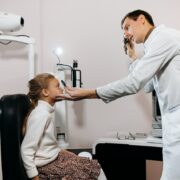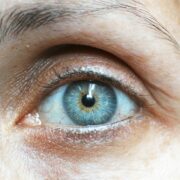Exploring the World of Bespoke Eyewear: The Art, Elegance and Benefits
While eyewear primarily serves a functional role in our lives, improving our vision or shielding our eyes from damage, it doesn’t mean it cannot be a natural extension of our personal style. More and more individuals are investing in bespoke eyewear, custom-made pieces crafted to uniquely suit their face shape, lifestyle requirements and aesthetic inclinations.
As London-based opticians championing the finest niche eyewear, Perspective Optometrists has an exceptional grasp of just how personal, innovative, and beneficial bespoke eyewear can be.
In this comprehensive guide, we will take you on a fascinating tour through the world of bespoke eyewear. We aim to show you the sheer artistry it involves, the elegance it confers upon those who adorn them, as well as the benefits that come with the preference for custom-built glasses.
1. The Allure of Bespoke Eyewear: Artistry in Craftsmanship
The world of bespoke eyewear is truly a celebration of artistry and craftsmanship. Not only do bespoke specs provide a distinctive style and an impeccable fit, but they are a reflection of the passion and precision put into their creation.
Expert opticians and artisans collaborate to design and produce frames tailored to the individual wearer’s needs, face shape, and preferences – a level of customisation unmatched in mass-produced eyewear.
Every detail of bespoke eyewear is given delicate attention, from the selection of high-quality materials and precise measurements to the fine-tuning during the fitting process. The result is a pair of glasses that are not only visually stunning but provide unparalleled comfort and functionality as well.
2. Advantages of Investing in Bespoke Eyewear
There are countless benefits to investing in bespoke eyewear. Let’s explore some of the most significant advantages which make these unique creations a popular choice for those seeking both style and comfort.
- Unrivalled Fit: Personalised measurements are taken to ensure that your bespoke glasses fit you flawlessly. This is crucial not just for comfort but also for optimum visual clarity. Without the constraint of mass-produced, one-size-fits-all options, bespoke eyewear guarantees a fit that is specifically contoured to your facial structure.
- Individualised Style: Bespoke eyewear allows you to express your unique sense of style in a variety of ways, from choosing the colour and material of the frames to selecting from an array of lens options. With mass-produced options, you may feel limited in your choices, but bespoke eyewear presents a virtually infinite range of possibilities to help you create your dream pair of glasses.
- Improved Eye Health: A bespoke approach to eyewear ensures that the lenses are precisely tailored to your individual prescription, providing the best possible visual acuity. Additionally, bespoke glasses guarantee that the lenses are positioned appropriately for your eyes, reducing the risk of eye strain and discomfort caused by off-centred or poorly-fitting lenses.
3. Choosing the Perfect Material for Your Bespoke Eyewear
One of the key advantages of investing in bespoke eyewear is the ability to choose from a variety of materials for your frames, depending on your preferences and needs. Let’s take a closer look at some popular choices:
- Acetate: A versatile, lightweight and hypoallergenic material, acetate is ideal for those seeking colourful, vibrant and unique frames. Available in a wide variety of colours and patterns, this is the go-to material for those looking to make a statement with their eyewear.
- Metal: For a sleek and sophisticated look, metal frames are an excellent choice. Materials like titanium, stainless steel, and aluminium offer a range of benefits, including durability, corrosion resistance, and lightweight construction.
- Wood: If you’re seeking an eco-friendly and distinctive option, wooden frames may be the answer. Hand-crafted from sustainable wood sources, these frames offer a unique and natural appearance that appeals to those who appreciate artisan craftsmanship and one-of-a-kind designs.
4. Tips for Choosing a Bespoke Eyewear Provider
When it comes to investing in bespoke eyewear, selecting the right provider is crucial. Consider the following tips when searching for an optician to create your custom glasses:
- Expertise: Look for an eyewear provider with experience in creating bespoke, artisanal glasses. This will ensure they possess the necessary knowledge, skills, and an eye for detail required to craft your one-of-a-kind pair.
- Variety: A quality eyewear provider should offer a vast selection of materials, designs, and lens options to guarantee a truly unique and personalised experience.
- Consultation: Schedule a consultation with your chosen optician to discuss your needs, preferences, and any specific concerns or requirements you may have. This conversation will provide insight into their level of expertise and customer service, and help you determine if they are the right fit for you.
Conclusion:
Bespoke eyewear is not simply a luxury, but an investment in your vision, comfort, and personal style. With expert craftsmanship, unparalleled fit, and limitless choices in materials and design, there is no comparison to the singular elegance that custom glasses bring to your persona.
By selecting the perfect eyewear provider — such as London’s finest niche eyewear specialists, Perspective Optometrists — and understanding the numerous benefits of bespoke glasses, you can embark on a journey to unparalleled sophistication and confidence in your eyewear choices. Select your frames and schedule an eye test in London today!














